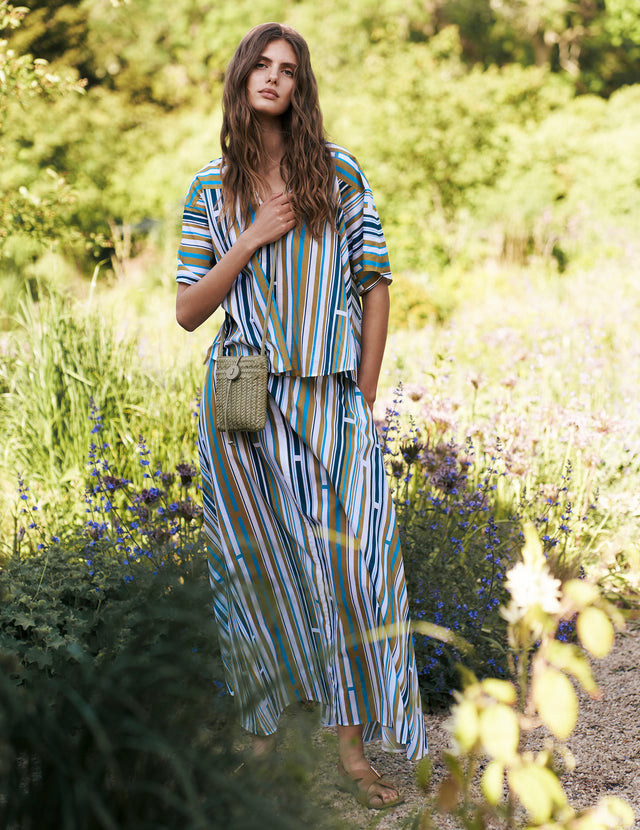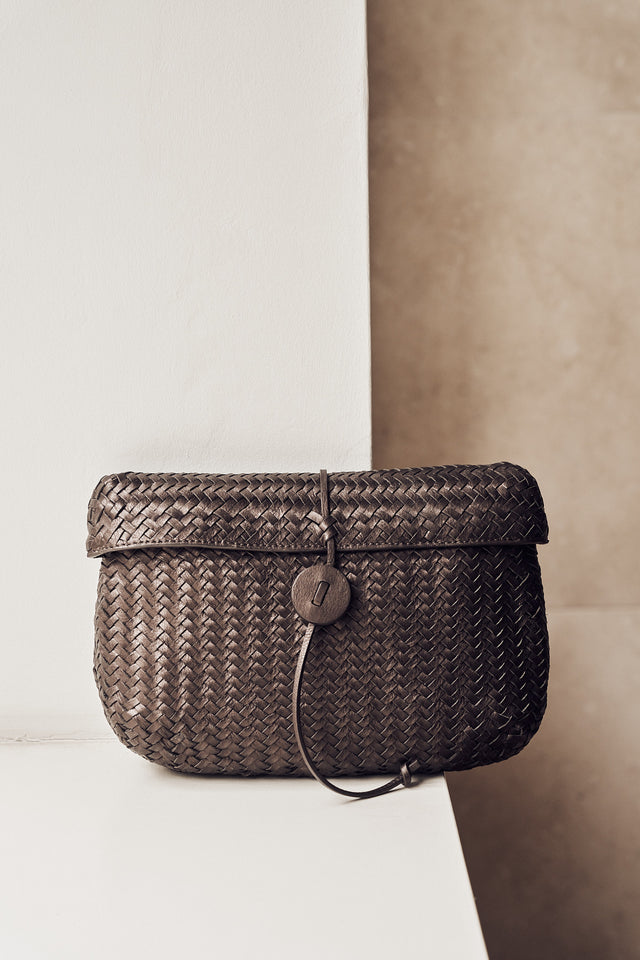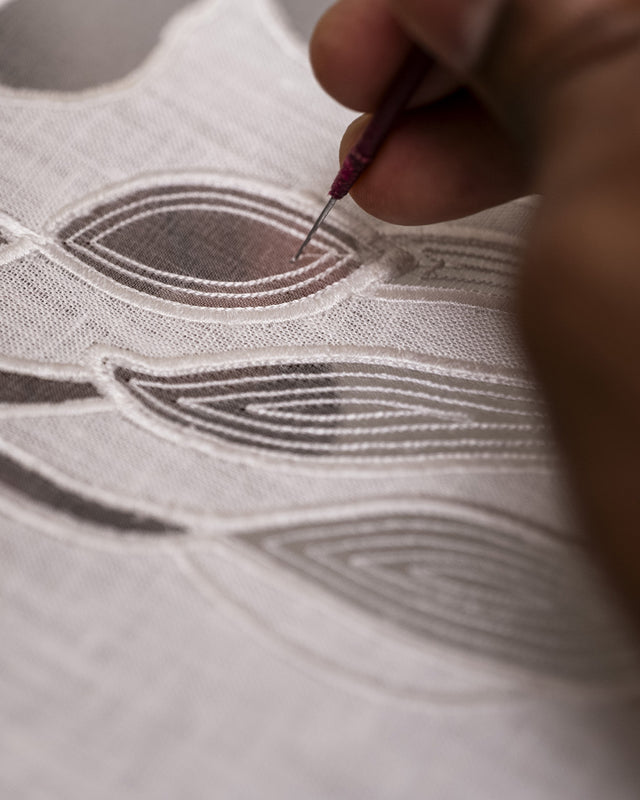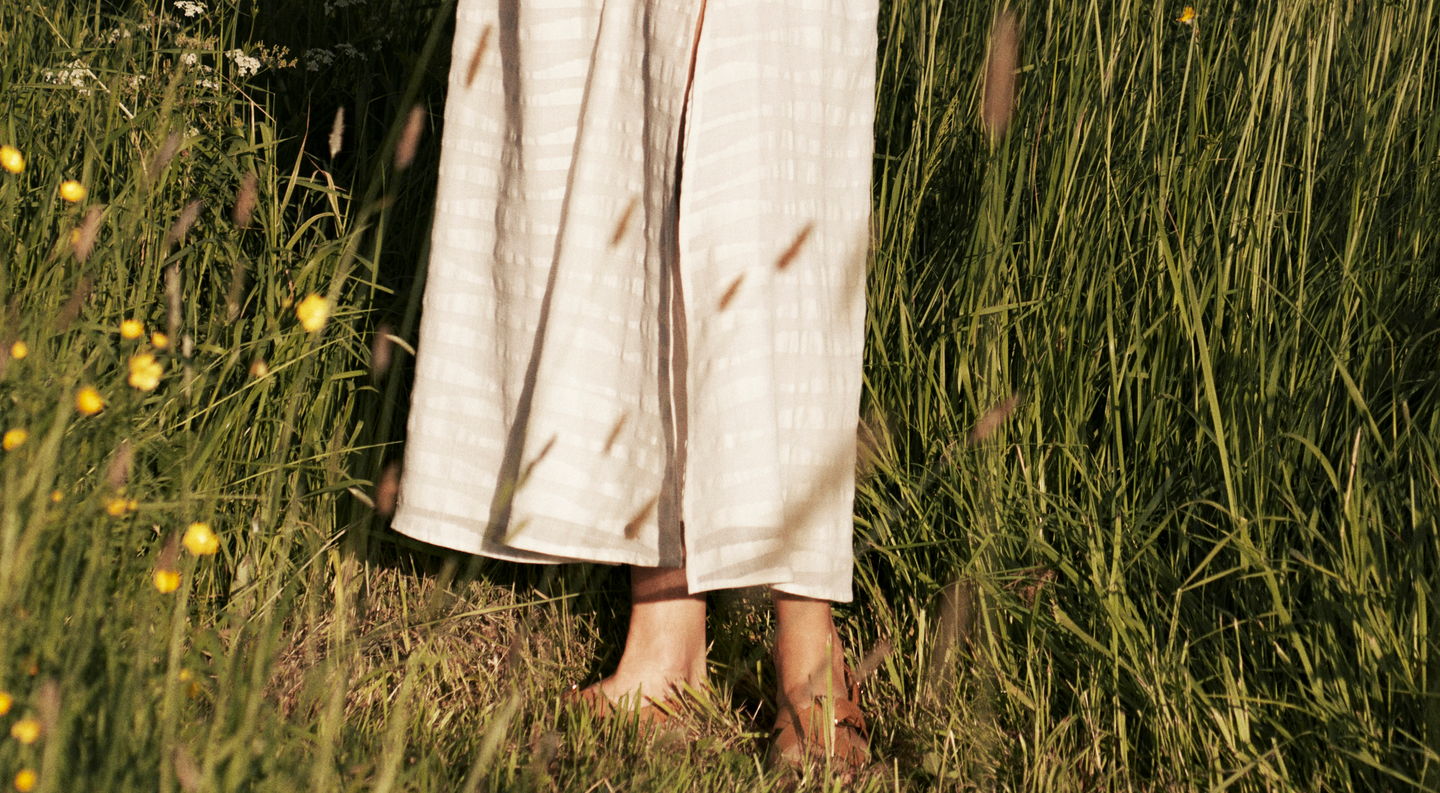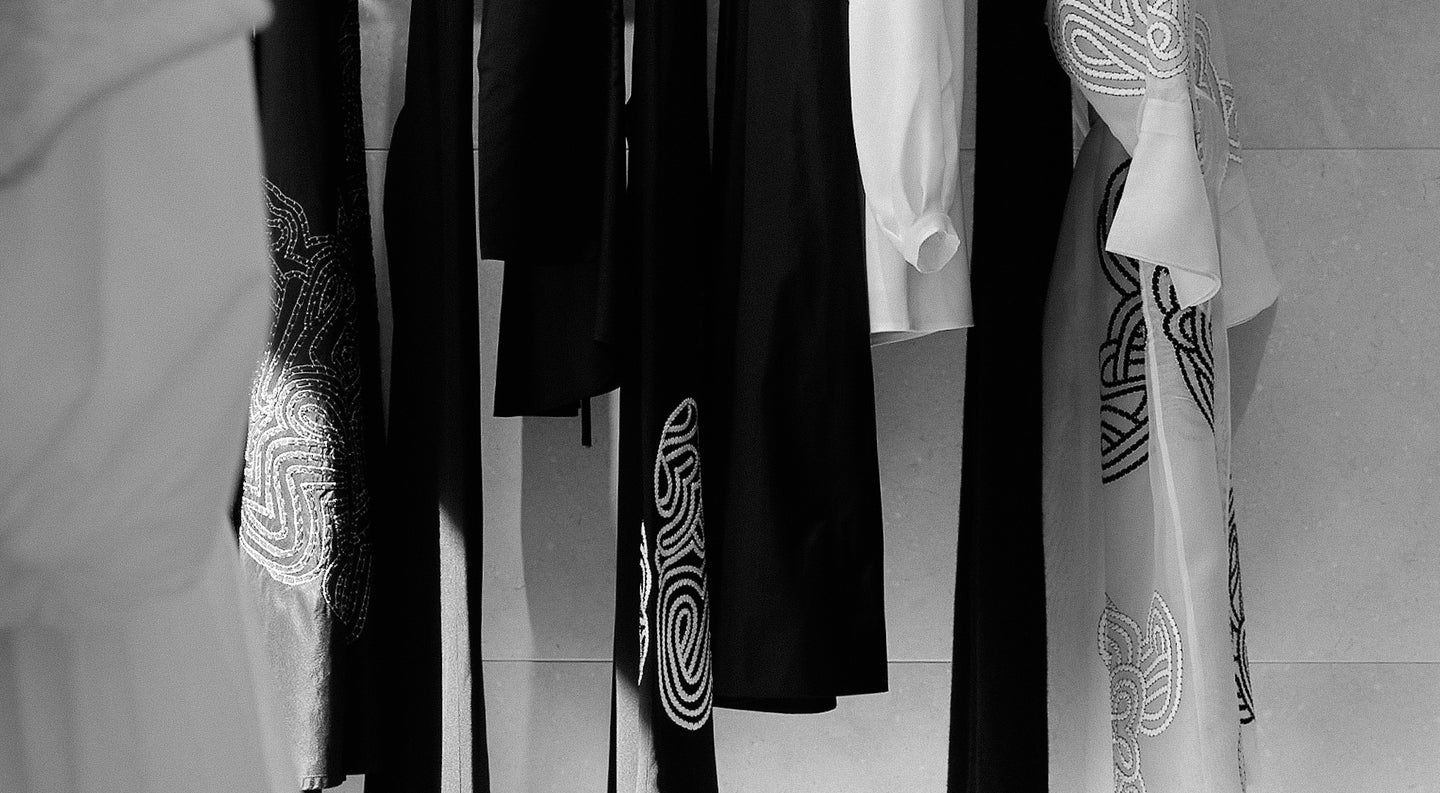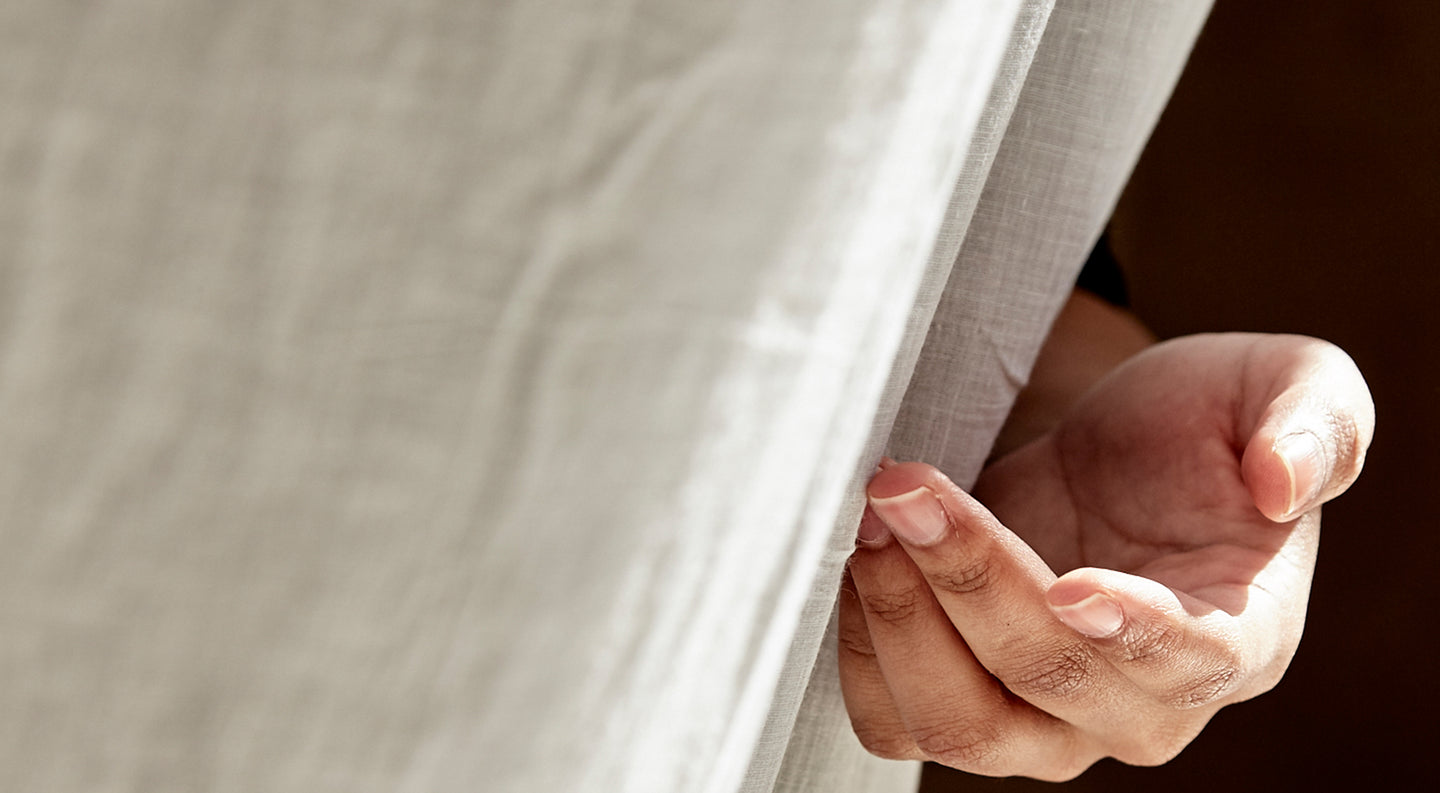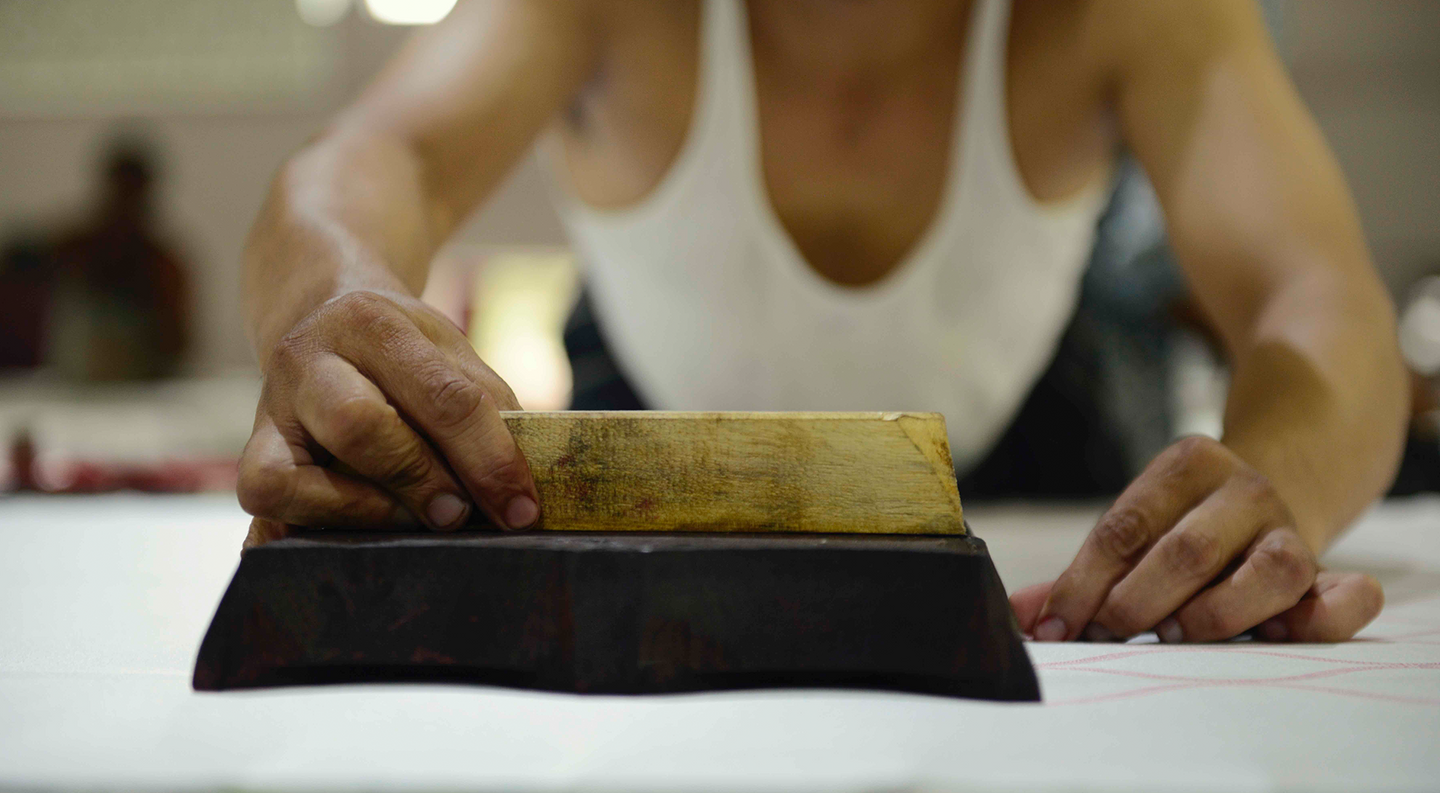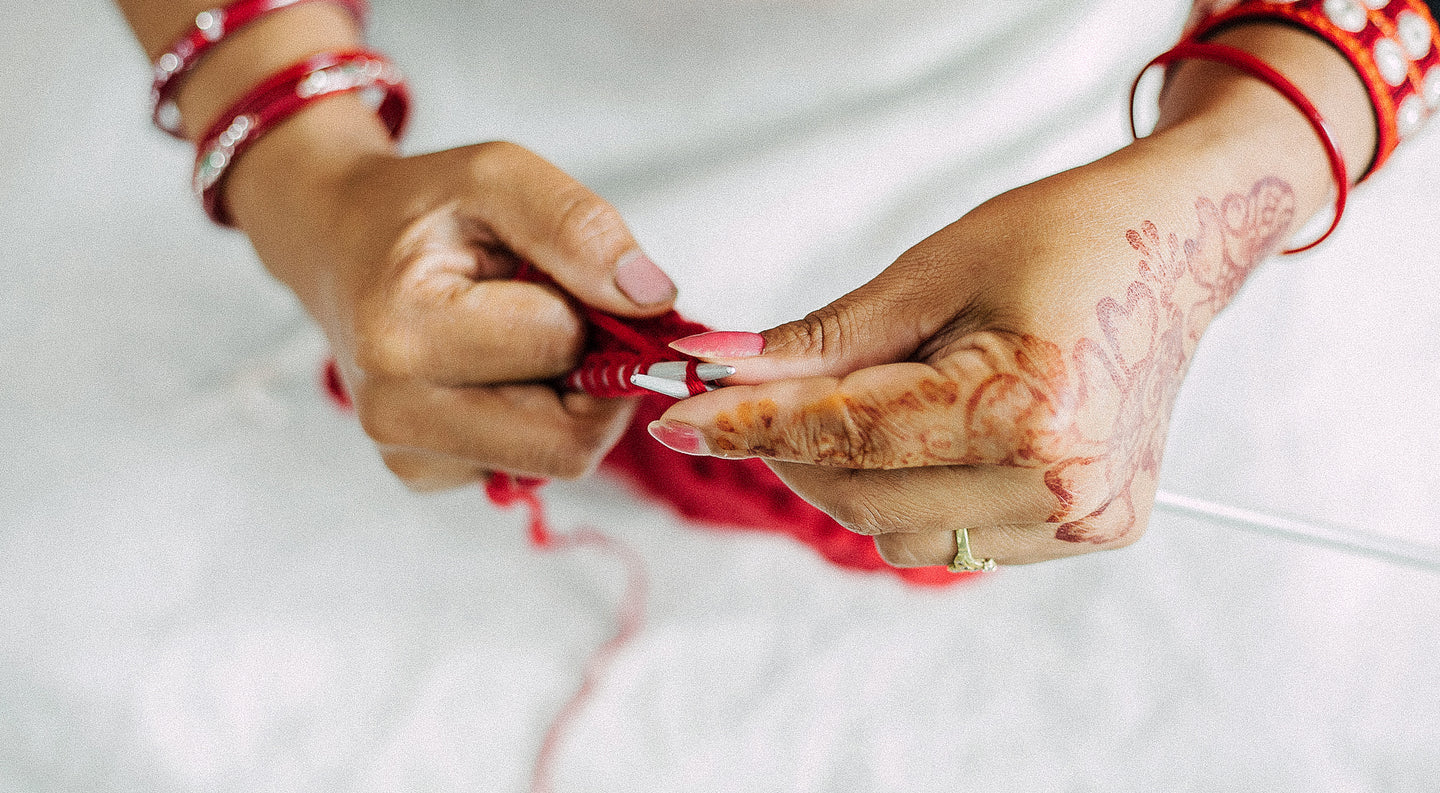Origins of Aari
The origins of Aari can be traced to the 12th century. First developed by leather workers in the western Indian state of Gujarat, it was used to create embellished footwear. In later years, under the patronage of Mughal emperors, Aari embroidery was done on fine silk and cotton fabrics exclusively by male artisans. Trade with countries like China and England brought in interesting design influences. Royal garments from the 17th century sport rich oriental landscapes as well as European botanical motifs like daffodils and irises, all embroidered using the Aari technique.
What is Aari Embroidery?
Aari gets its name from the ‘Aar’, which is a small, hooked needle or awl. First, the pattern is carefully drawn on thin or transparent paper by a specialised artisan. Tiny pinholes are made along the outlines and the paper is placed on the fabric.
A special powder is rubbed over the paper and gets deposited in little dots that go through the pinholes, creating the outline of the intricate pattern on the fabric below. The fabric is then mounted on a rectangular, wooden frame, ready for the embroidery process to begin.
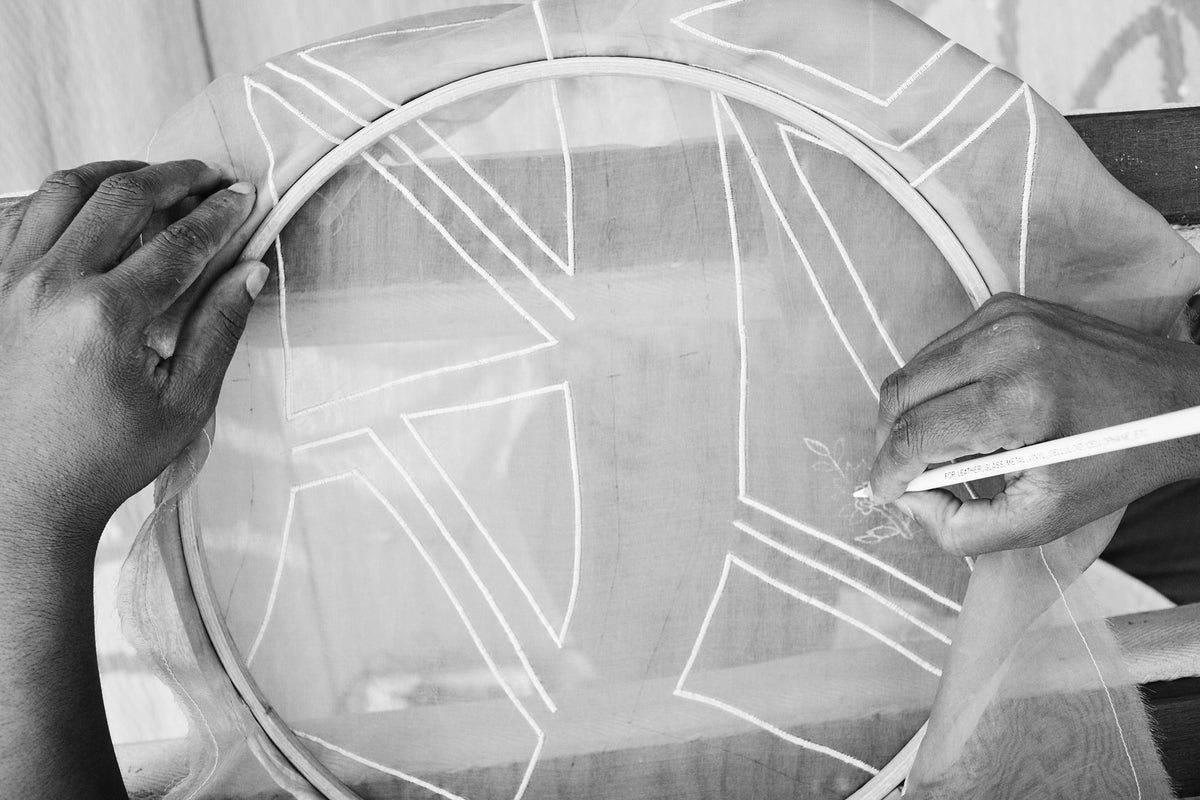
Patience & Precision: Aari Technique
The Aari needle is plied from above, but fed by silk thread from below the fabric. The craftsmen sit on the floor, one hand plying the sharp needle and the other holding the thread in the place. Aari craftsmen move the needle swiftly in repetitive loops, to create an unbelievably fine line of chain stitches. It is common practice to include embellishments like small beads and sequins in Aari embroidery for richer effects. Gold, silver and copper threads called ‘zari’ are also used to create gorgeous patterns that hark back to the days of Mughal royalty.
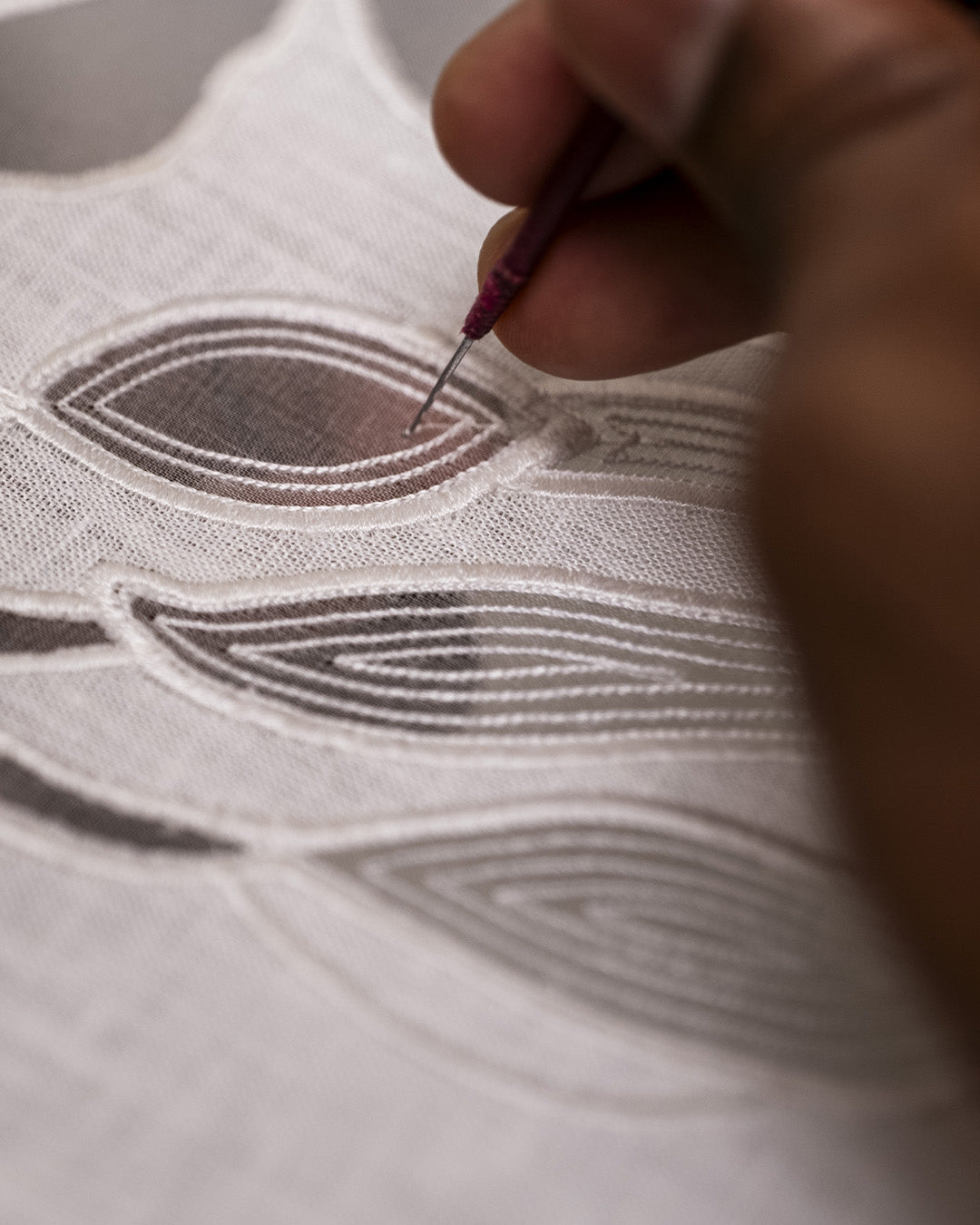
The Aari embroidery technique demands an enormous amount of skill, training, patience and precision. The craftsmen must concentrate on following the fine outlines of the design, while creating the subtle gradations of colour required to fill in the motif.
“Varana’s pared down aesthetic interprets Aari with ultimate simplicity revealing the fineness of the skill and perfection in each delicate stitch.”
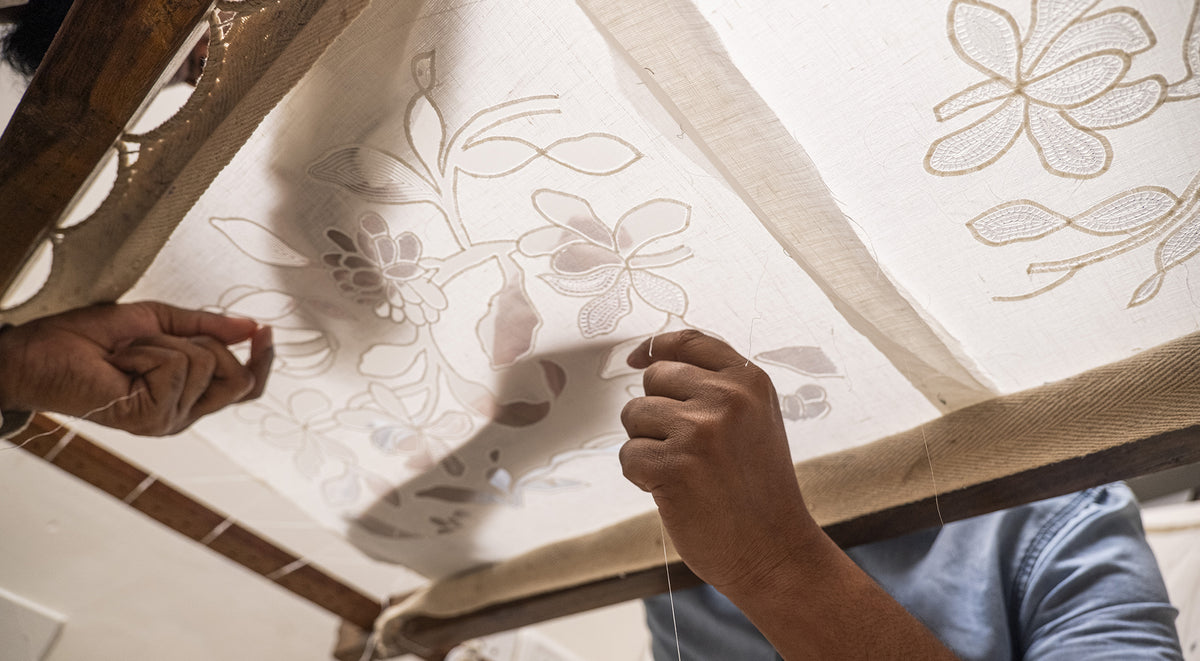
They must ply the Aari needle at a consistent pace, ensuring that each stitch is the same size and placed correctly, so that all the eye sees is the seamless beauty of the final design.
The Aari technique is widely used through all of Varana’s collections. The traditional use of Aari is ornate and elaborate, while Varana’s pared down aesthetic interprets Aari with ultimate simplicity revealing the fineness of the skill and perfection in each delicate stitch.
